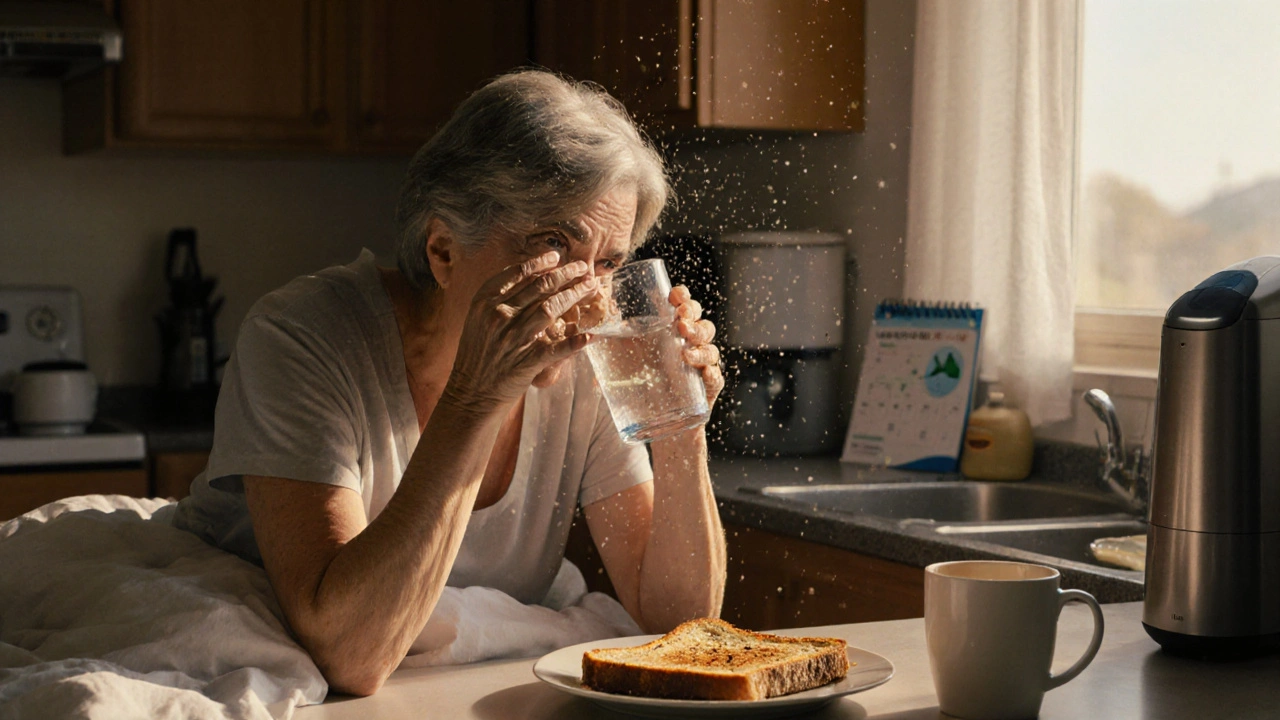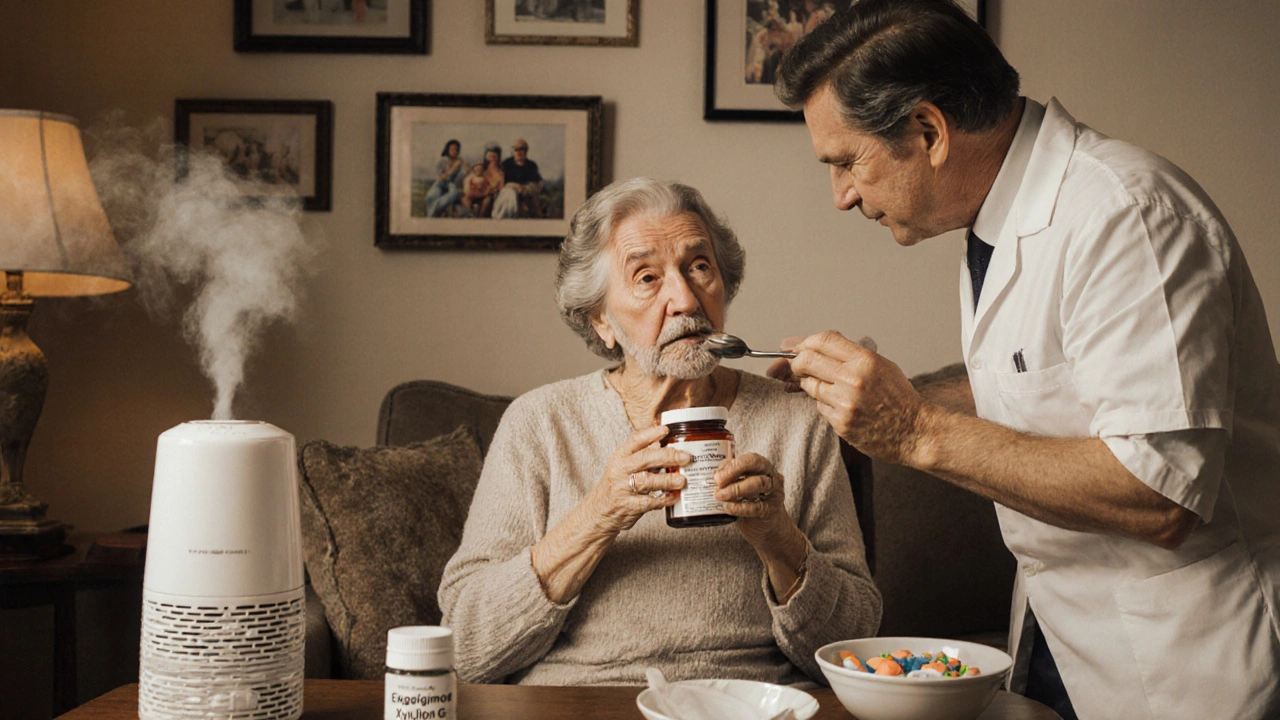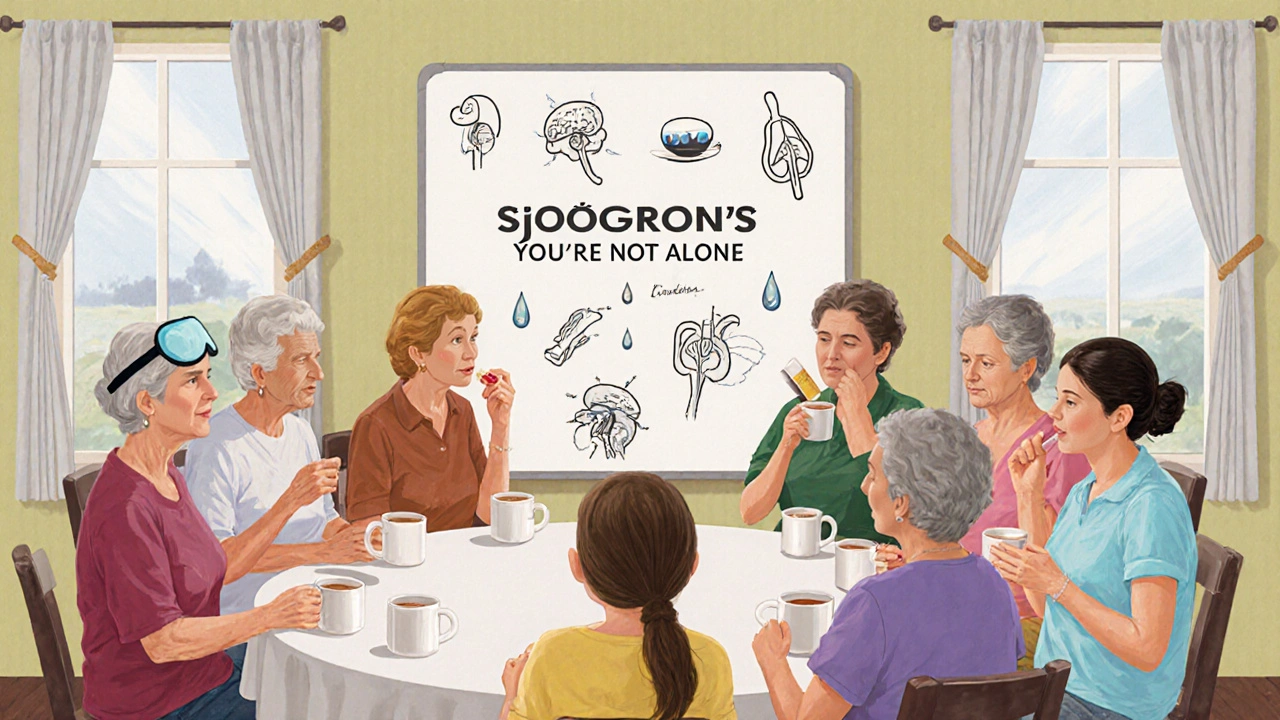Sjögren’s Syndrome: What It Is, How It Affects Your Body, and How to Manage It

Imagine waking up every morning with sand in your eyes. Not just irritation-actual grit, like you slept in a desert. Then, trying to eat breakfast, you realize your mouth is so dry that even a bite of toast feels like swallowing paper. You sip water constantly, but it doesn’t help. This isn’t just bad luck or dehydration. For over 4 million people in the U.S. alone, this is daily life with Sjögren’s Syndrome.
It’s Not Just Dryness-It’s an Autoimmune War
Sjögren’s Syndrome isn’t a simple case of dry eyes or a parched throat. It’s an autoimmune disease where your own immune system turns against your body. Specifically, it attacks the glands that make moisture: tear glands in your eyes and salivary glands in your mouth. But it doesn’t stop there. The same immune confusion can hit your skin, lungs, joints, nerves, and even your vagina. This disease was first described in 1933 by Swedish doctor Henrik Sjögren. Back then, people thought it was just about dryness. Now we know better. It’s a systemic condition. That means it doesn’t just sit in one place-it spreads. About 90% of those diagnosed are women, usually between 45 and 55. But it can happen to anyone, even children. The real problem? Most doctors don’t recognize it right away. Symptoms creep in slowly. You might think your dry eyes are from staring at screens. Your dry mouth? Maybe you’re stressed. Or you’re not drinking enough water. But if you’ve had these symptoms for more than three months, and nothing fixes them, it could be Sjögren’s.The Hallmark Symptoms: Eyes, Mouth, and Beyond
The two most common signs are dry eyes and dry mouth, but they’re worse than you’d expect. Dry eyes aren’t just uncomfortable. They feel like tiny particles are scratching your eyeballs. Redness, burning, light sensitivity-it all adds up. You might blink more, or feel like you need artificial tears every hour. Doctors use a test called Schirmer’s test to measure tear production. If you produce less than 5 millimeters of tears in 5 minutes, that’s a red flag. Dry mouth is even more disruptive. Saliva isn’t just for comfort-it protects your teeth, helps you swallow, and lets you taste food. Without it, eating bread, crackers, or even rice becomes a chore. You need to sip water constantly. Your tongue might crack. Your lips get sore. And your risk of cavities? It jumps 5 to 10 times higher. That’s why people with Sjögren’s need dental checkups every 3 to 4 months, not every 6. But here’s what most people don’t talk about:- Extreme fatigue that doesn’t go away with sleep
- Joint pain that mimics arthritis but doesn’t destroy bones
- Brain fog-struggling to find words, forgetting names, feeling mentally sluggish
- Dry, itchy skin or rashes on hands and feet
- Vaginal dryness, which affects about half of women and can wreck relationships
- A persistent dry cough from lung involvement
- Numbness or tingling in hands and feet from nerve damage
Why Does This Happen? Genetics, Triggers, and the Immune System
No one knows exactly why the immune system targets moisture glands. But we do know it’s not just one thing. Genetics play a role. Certain gene changes make some people more likely to develop Sjögren’s. But genes alone don’t cause it. Something has to trigger it-often a virus or bacterial infection. Think Epstein-Barr, hepatitis C, or even a bad cold that didn’t fully clear. The immune system then starts making antibodies-specifically anti-SSA/Ro and anti-SSB/La. These are like flags that say “attack this gland.” About 60-70% of people with Sjögren’s have these antibodies. If you have anti-SSB/La, your risk of developing serious complications like lung or nerve damage is over three times higher. And here’s the scary part: Sjögren’s raises your risk of lymphoma. About 4-5% of people with the condition develop non-Hodgkin lymphoma over their lifetime. That’s 10 times higher than the general population. It’s rare, but it’s real. That’s why regular checkups with a rheumatologist matter.
How Is It Diagnosed? It Takes More Than One Test
There’s no single blood test that says “yes, you have Sjögren’s.” Diagnosis is a puzzle. Doctors look for three things:- **Symptoms**: At least three months of dry eyes and/or dry mouth
- **Objective tests**: Schirmer’s test for tear production, salivary flow test (less than 1.5 mL in 15 minutes), or a biopsy of a minor salivary gland showing immune cell clusters
- **Autoantibodies**: Anti-SSA/Ro or anti-SSB/La in the blood
What’s New in Treatment? Hope on the Horizon
For decades, treatment was just about managing symptoms: artificial tears, sugar-free gum, humidifiers. But things are changing. In June 2023, the FDA approved the first new drug for Sjögren’s in 20 years: Efgartigimod (brand name Vyvgart Hytrulo). In a clinical trial, it improved dry mouth symptoms by 35% compared to placebo. It works by reducing the harmful antibodies attacking the glands. Other medications still in use:- Pilocarpine or cevimeline: These stimulate saliva and tear production. About 60-70% of people see improvement, but side effects like sweating or stomach upset can be tough.
- Hydroxychloroquine: Used for joint pain and fatigue. Works for about 30-40% of patients.
- Preservative-free artificial tears: Used 8-10 times a day. Regular drops with preservatives can irritate eyes more.
- Saliva substitutes: Sprays or gels you use 5-7 times daily.
Lifestyle and Daily Management
Medications help, but daily habits make the biggest difference.- Humidify your home: Keep humidity between 40-60%. Dry air makes everything worse.
- Drink water constantly: Not just when you’re thirsty. Sip all day.
- Avoid triggers: Alcohol, caffeine, smoking, and antihistamines dry you out even more.
- Choose moist foods: Soups, stews, sauces, and yogurt are easier to swallow than dry bread or crackers.
- Protect your eyes: Wear wraparound sunglasses outdoors. Use a sleep mask if your eyes don’t close fully at night.
- Moisturize your skin: Use fragrance-free creams after showers. Avoid hot water.
- Use lubricants for vaginal dryness: Water-based or silicone-based options help. Don’t be embarrassed to ask your gynecologist.
- 89% use special oral care products
- 52% take omega-3 supplements
- 23% try acupuncture

Living With Sjögren’s: The Emotional Toll
This disease doesn’t just hurt your body-it hurts your soul. A survey by the Sjögren’s Syndrome Foundation found:- 87% struggled with daily tasks because of dry mouth
- 79% said eye pain affected their work
- 63% said it damaged their social life
- 42% reported symptoms of depression
Manish Pandya
November 25, 2025 AT 23:31Wow, this is one of the most clear-headed explanations of Sjögren’s I’ve ever read. I’ve had dry eyes for years and thought it was just screen fatigue. Turns out I’ve had this since 2019 and never got tested. Thanks for laying it out like this-finally feels like someone gets it.
Lawrence Zawahri
November 26, 2025 AT 04:30Let me guess-Big Pharma pushed this narrative to sell you $300 eye drops and that Vyvgart scam. They don’t want you to know that Sjögren’s is just a cover-up for fluoride poisoning in the water supply. The CDC knows. The WHO knows. That’s why they won’t fund real research. Look up the 2018 WHO memo on ‘autoimmune disinformation campaigns.’